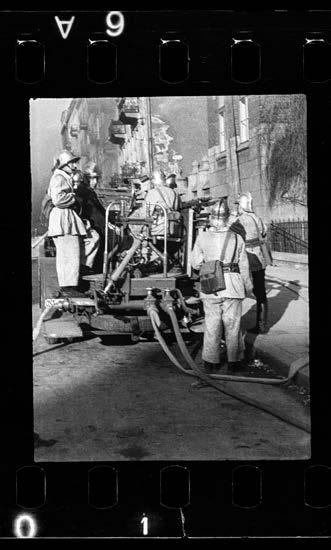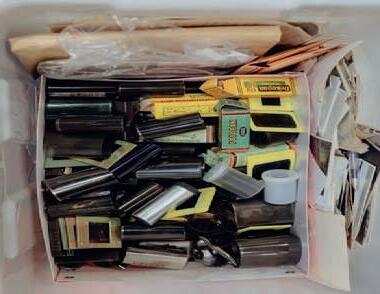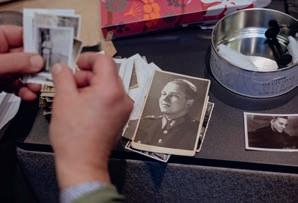
2 minute read
AROUND US… A SEA OF FIRE
Shot by a firefighter called into service during the time, a priceless roll of negatives capturing the Warsaw Ghetto Uprising have been discovered in an attic...



MACIEK JAZWIECKI/POLIN
Handed to the POLIN Museum in January, the film will now form an integral part of a forthcoming exhibition that will mark the 80th anniversary of the doomed insurrection. Hailed by the museum’s archivists as “priceless”, the negatives contain 48 pictures in all, of which 33 show the Ghetto during its final days.
Taken by Zbigniew Leszek Grzywaczewski, a 23-year-old firefighter for the Warsaw Fire Brigade, the images were snapped in secret after his unit was sent to the Jewish quarter to prevent fires reaching the Aryan side of the city.
Prompted by rumors relating to the Ghetto’s liquidation, the starving Jews that had thus far survived rose in rebellion despite being hopelessly ill-equipped. Launching their resistance on April 19th, 1943, the insurgents armory numbered just two sub-machine guns, 17 rifles and 500 pistols. They did not, however, lack willpower. Armed also with homemade devices, the ragbag unit of fighters held off the full might of the Wehrmacht until May 16th.
Infuriated by this display of insubordination, the German response was swift with crack units often resorting to burning entire streets so as to flush out the rebels. To stop these blazes spreading over the Ghetto walls, firemen such as Grzywaczewski were pressganged into action by the occupying Nazis.
In one diary entry, Grzywaczewski wrote about the horrors he had witnessed: “the image of these people being dragged out of there [out of the bunkers] will stay with me for the rest of my life. Their faces […] with a deranged, absent look. […] figures staggering from hunger and dismay, filthy, ragged. Shot dead en masse; those still alive falling over the bodies of the ones who have already been annihilated.”

Grzywaczewski was called to the Ghetto several times between April 21st and May 15th, with researchers believing that he took his camera in a bid to document the unfolding tragedy. Of the six photographs that have so far been made public, we see desperate scenes as soldiers herd women and children towards the Umschlagplatz (a transit point that carried Warsaw’s Jews to the death factory at Treblinka), a ghostly courtyard piled high with abandoned household items and thick clouds of smoke hanging threateningly over the once thriving heart of the Jewish world.
In another shocking image, we see German officers looking out towards the inferno as if casually observing a training exercise. Though often blurred and imperfect, the discovery of these images has been hailed sensational. “Prior to this,” said Professor Jacek Leociak of POLIN, “the only existing pictures we had seen of the Ghetto Uprising had been taken by Germans. These, on the other hand, show it through an entirely new perspective – through the eyes of a Pole.”
Grzywaczewski later partook in the Warsaw Uprising the following year, and despite being wounded he would resume his firefighting career before becoming an author. Passing away in 1993 in Gdańsk, his son, Maciej, uncovered the forgotten negatives whilst searching out boxes of family heirlooms stored in an attic – the film, he says, was in the last box he checked. Speaking at a press conference held in POLIN, he said: “one of the photos shows a Jewish family jumping from the window of a burning house. My father signed the photo with the words, ‘we were unable to help them’.” Referencing Russia’s savage brutalization of Ukraine, Maciej Grzywaczewski added: “Let’s not be indifferent to what is happening in Ukraine. Let’s help them, because we can.”
Currently displayed in limited form online, the rest of the rediscovered images will be presented at POLIN’s April exhibition titled, ‘Around Us A Sea of Fire. The Fate of Jewish Civilians During the Warsaw Ghetto Uprising.’











